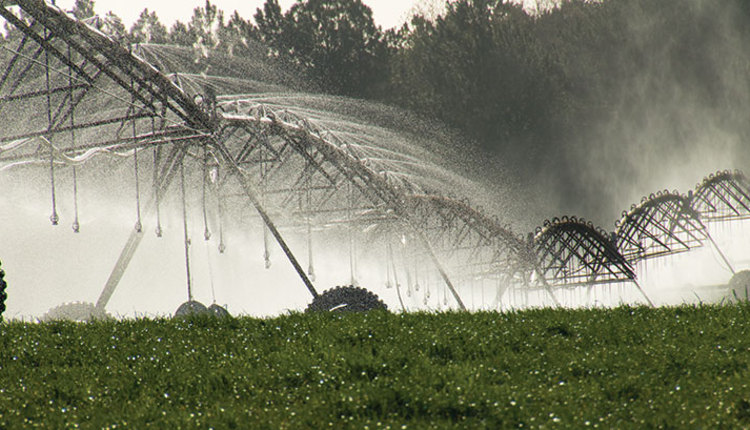The author is a rancher, author, speaker, and consultant with over 40 years of experience in grazing management research, outreach, and practice. He has lived and grazed livestock in hot, humid Missouri and cold, dry Idaho.

It seems pretty straightforward. In the West, we irrigate pastures; in the East, we don’t. In the East, it rains frequently, and in the West, it doesn’t. Plain as black and white. End of story . . . or is it?
During the 23 years we were on our farm in Missouri, where we averaged 38 to 40 inches of precipitation annually, I am pretty sure it never crossed my mind to consider any kind of irrigation there. Sure, we had dry spells where a little bit of water would have made a big difference, but there was no way that irrigation could possibly be affordable — or could it be?
What changed my viewpoint in the 17 years since we left Missouri and settled in central Idaho, where we experience only 7 to 8 inches of precipitation annually? Is it the fact that I live and work with irrigation on a daily basis now? Have I simply fallen under the allure of knowing I have the power to make it rain? Not really.
A greater demand
What has changed my mind is the changing face of the American food system. It is the changing value of the products we can make and offer directly to the consumer. The demand for pasture-raised beef, lamb, pork, poultry, and dairy products has been steadily growing throughout the U.S. for the last 20-plus years. Farmers and ranchers now have the opportunity to earn premium prices for high-quality food produced entirely from their pastures.
The quality of these pasture-raised food products is affected directly by the quantity and quality of forage available to the livestock. Consumers are willing to pay a significant premium for tasty, tender meats raised entirely on pasture. You can walk into mainstream supermarkets and find milk and other dairy products from cows fed only forages. There’s not one bite of grain in their diet — just 100% grass milk.
The challenge down on the farm is ensuring there is an adequate quantity and quality of forage available every day to keep the milk flowing and the beef animals fattening. There is now a direct link between the paddock that the livestock enter today and the price you will receive for the end product.
That is where strategic irrigation comes into the picture. Even in a historically wet environment like the Midwest or the Northeast, we see periodic droughts. Dry spells as short as two weeks can begin to affect the growth and quality of the available forage. Stretch that out to four or six weeks, or even longer, with minimal rainfall on a cool-season pasture that thrives on an abundance of water, and the whole production model starts to break down.
For the farmer who has the option of applying an inch of water per week for those six weeks, it might be the difference between getting the animals finished on the specified harvest date or not. It might be the difference between a steer grading Select rather than Choice.
Direct financial implications
Suddenly, the ability to keep a pasture green and highly nutritious has a direct financial outcome, and that difference can be substantial. It could be substantial enough to pay for installing an irrigation system that may only be needed a few weeks of the year. As the climate becomes more unpredictable, the insurance of having timely irrigation available will become more valuable.
It isn’t necessary to plan to irrigate the entire farm. It is important to choose a site with highly productive soils that is hopefully close to a strong water source. It takes a lot of water to irrigate, so the idea of watering 40 acres out of a 1-acre pond just isn’t feasible.
For supplemental irrigation, we like to see a well with at least 5 gallons per minute (GPM) flow rate per irrigated acre. If you are looking to water 40 acres, you will need a water capacity of 200 GPM. That’s a lot of water demand, and it’s much more than most farmers in the eastern half of the U.S. are used to thinking about.
For the smaller field sizes and the frequently odd-shaped pastures found in the rolling country in the East, we like the flexibility of the line-pod irrigation systems. This equipment was originally developed in New Zealand specifically for pasture irrigation. Compared to center pivot or linear sprinkler systems, it is a much lower cost option.
If you are in the business of producing premium value pasture-raised meat and dairy products for direct marketing to discerning consumers, you should probably be looking at the opportunity of strategic irrigation to protect the yield and quality of your pastures.
This article appeared in the March 2021 issue of Hay & Forage Grower on page 13.
Not a subscriber? Click to get the print magazine.

